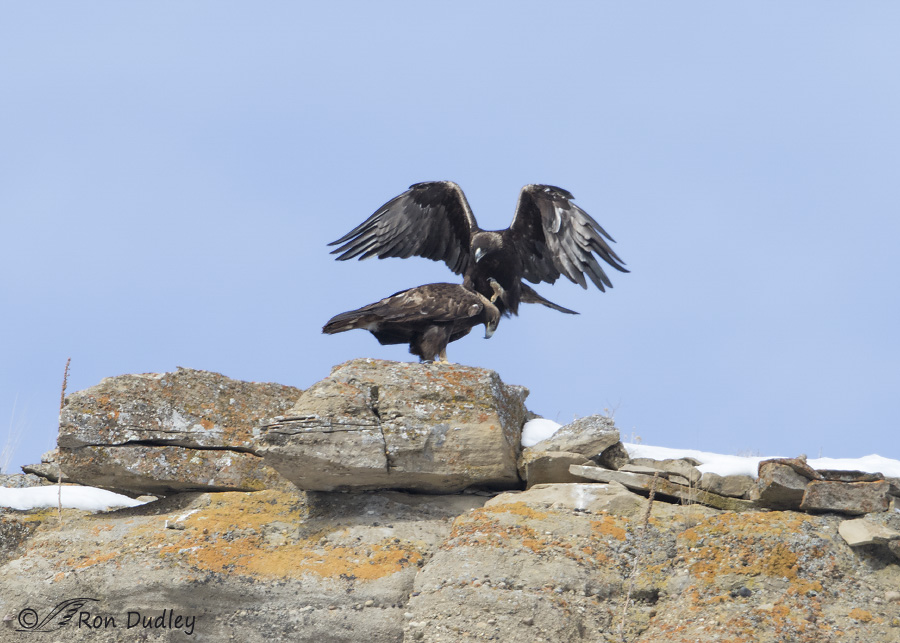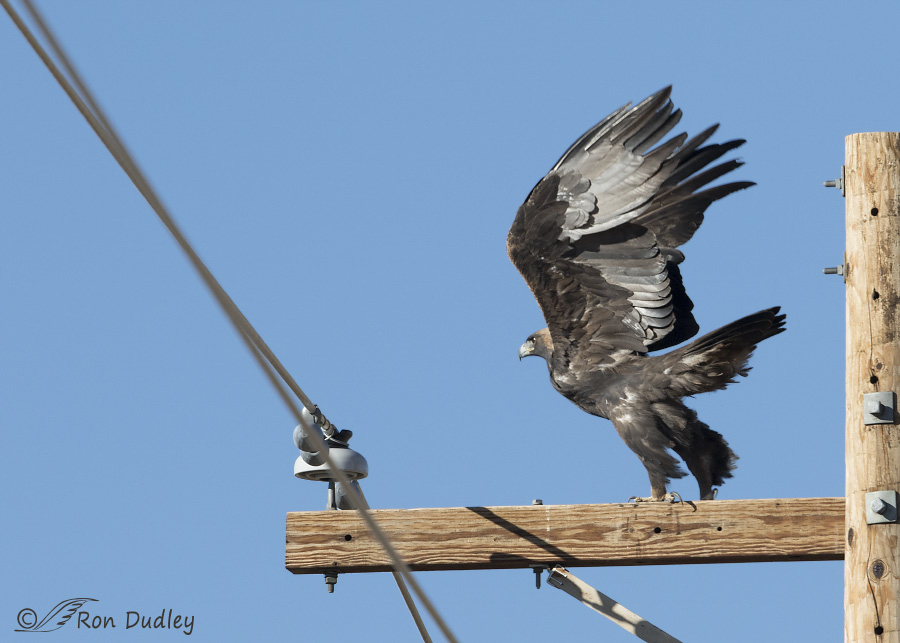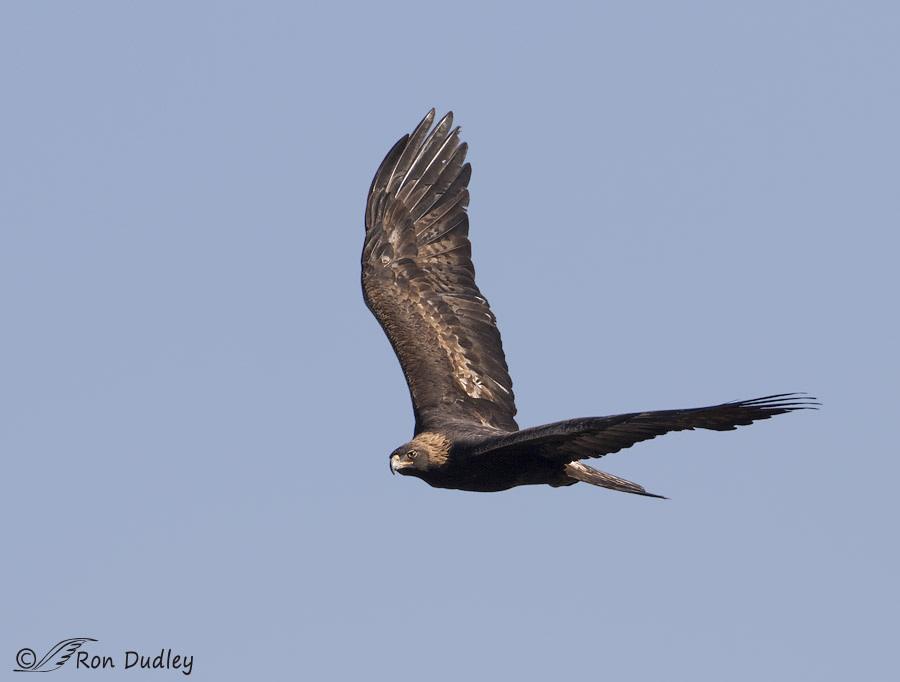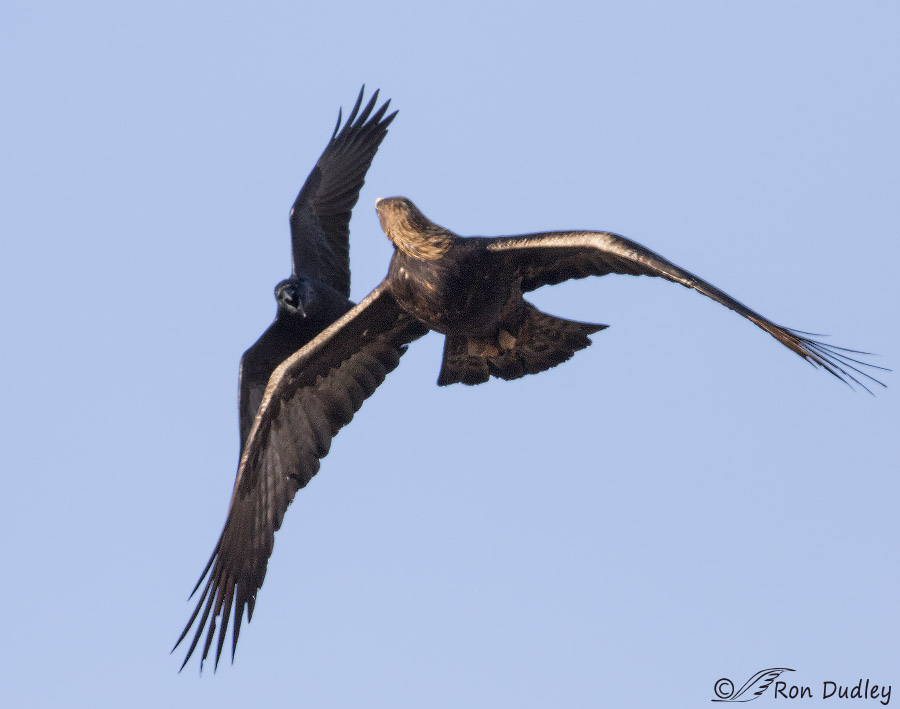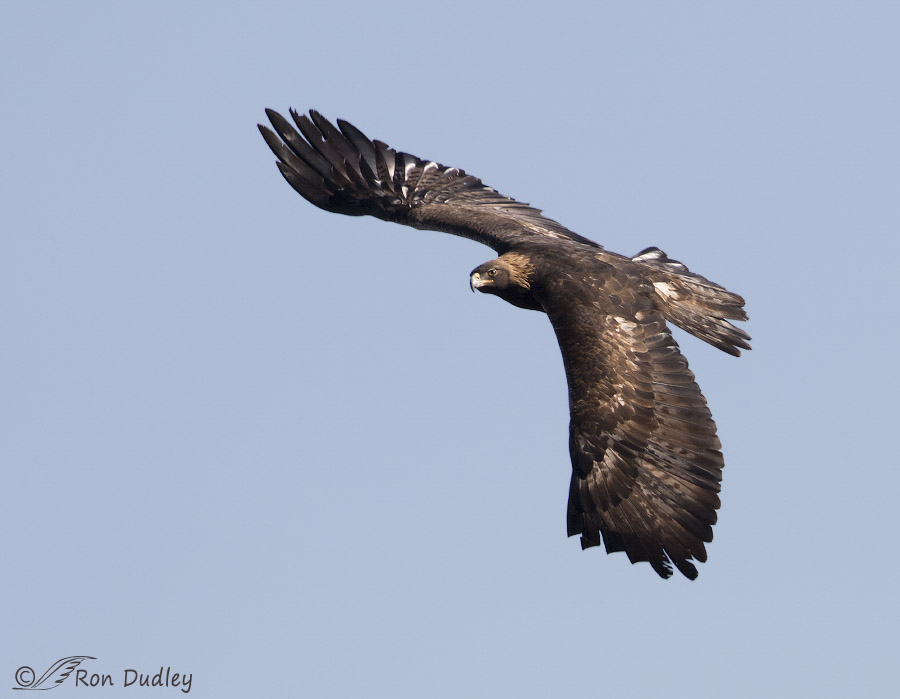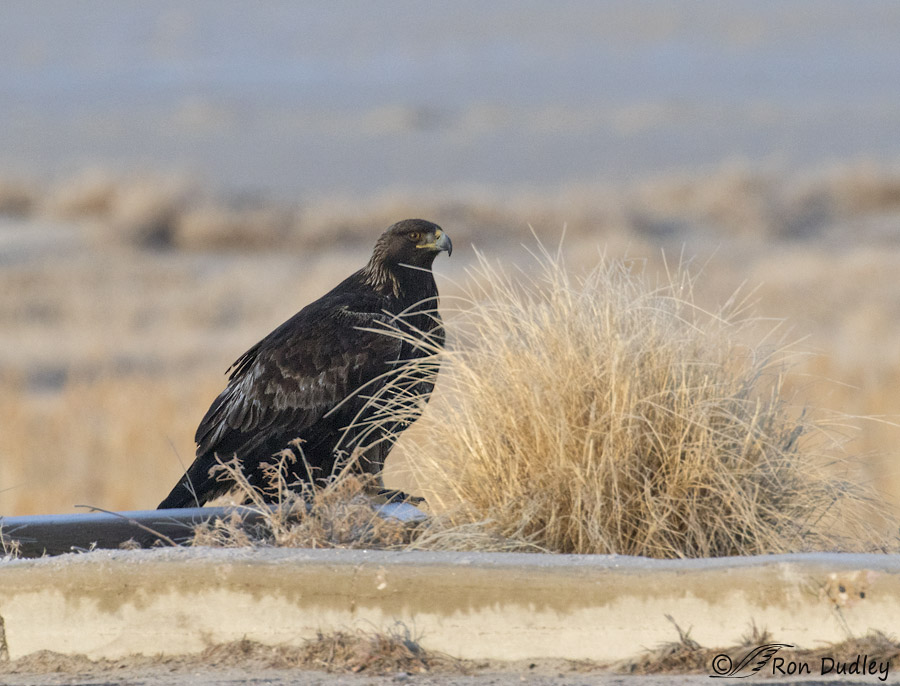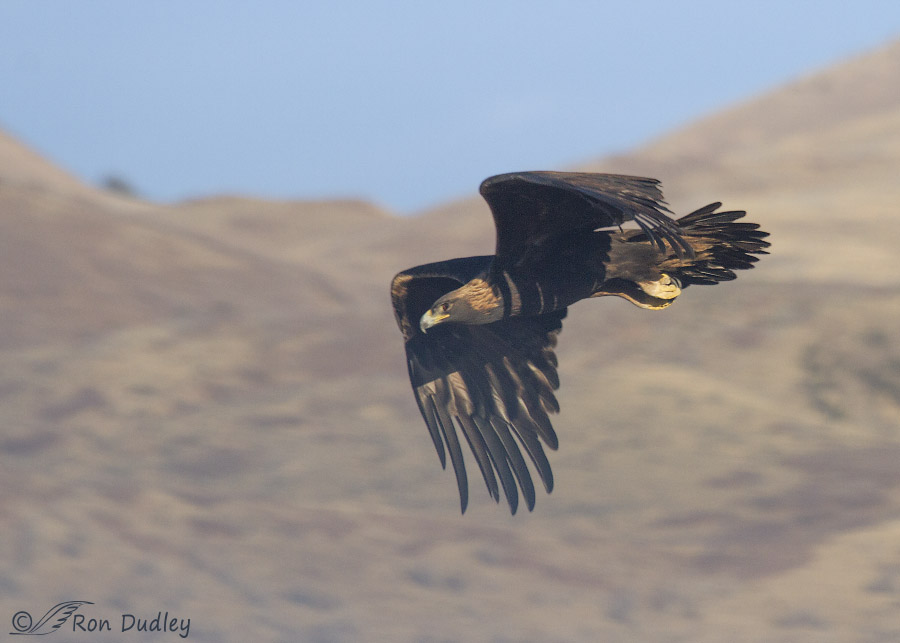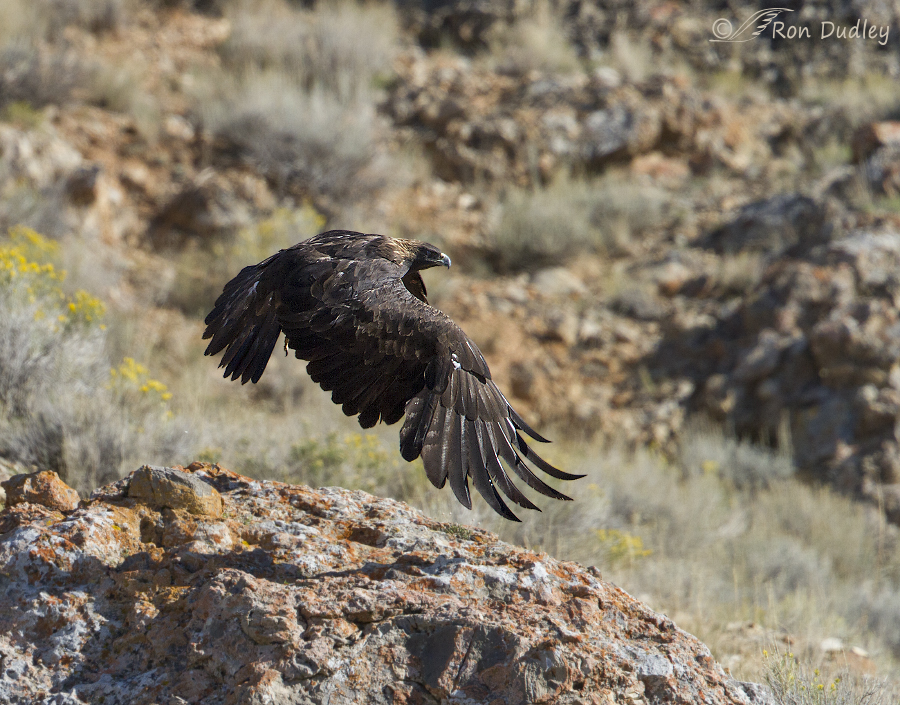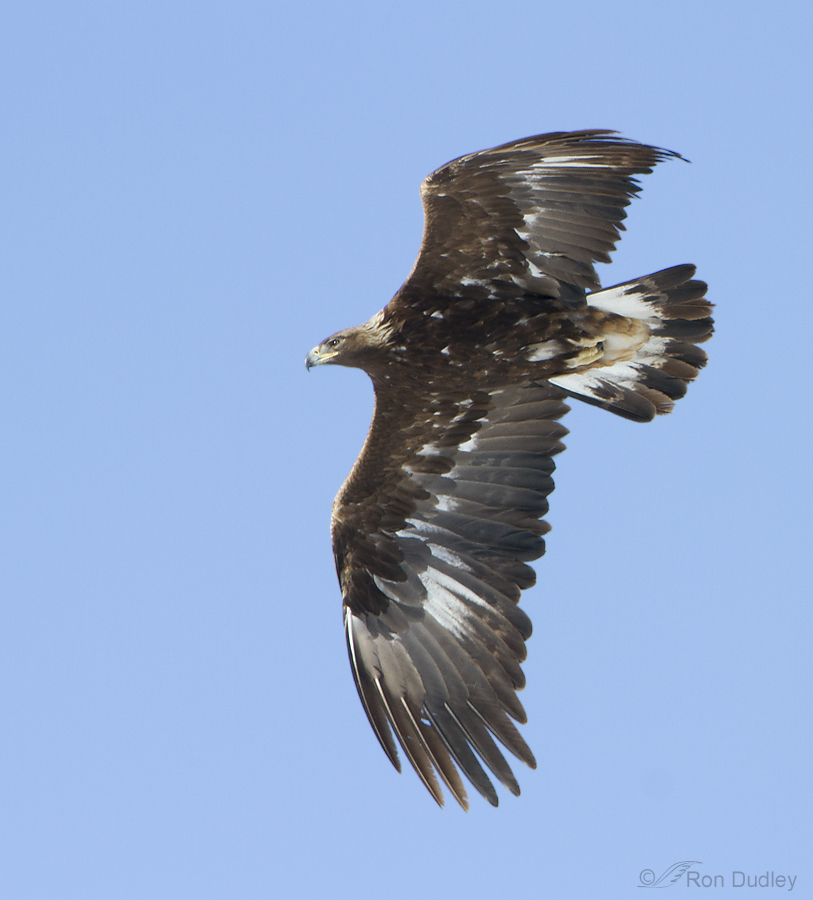Tag: golden eagle
Golden Eagle – A Magnificent Bird But Still A Nemesis
Golden Eagle In Flight
Raven Sneak Attack On A Golden Eagle In Flight
Golden Eagles Playing In The Wind
Coyotes Steal A Jackrabbit From Golden Eagles
Two Golden Eagles On Antelope Island
Golden Eagle In Flight (no wires this time)
Golden Eagle – Out, Damn’d Wires, Out!
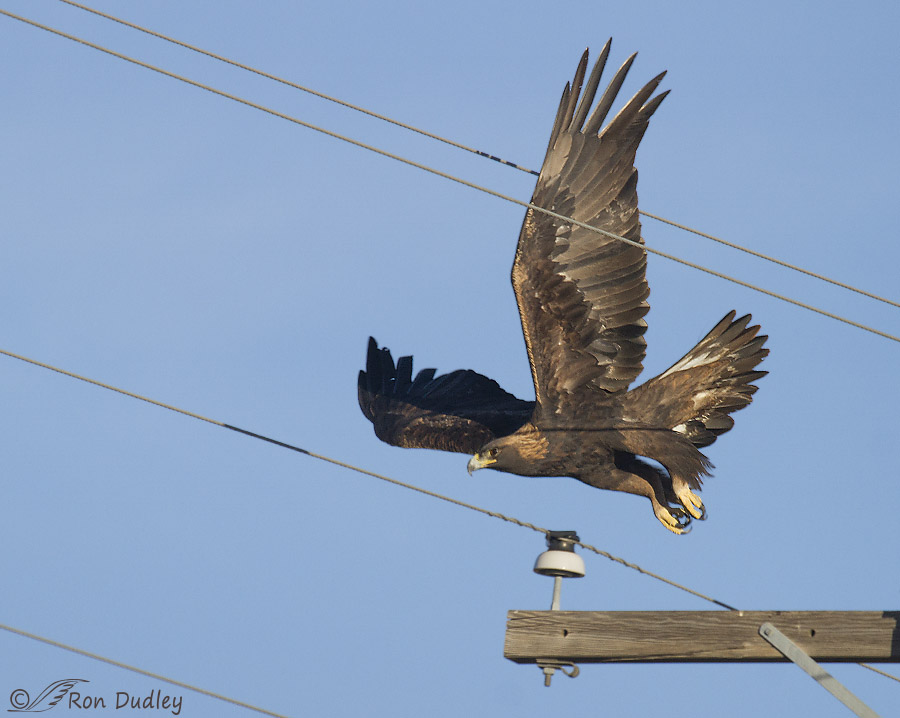
I have a small list of personal nemesis species but if forced to choose the top contender it would have to be the shy and elusive Golden Eagle. I’d estimate that I get a reasonable chance with one of these birds about two times per year and every time something goes wrong that prevents me from getting the photos I covet so much. Two mornings ago it was those ever-pesky power lines.
Golden Eagle – My #1 Nemesis Bird. The Curse Continues But Twice I Almost Succeeded
West Desert Red-tail In Flight
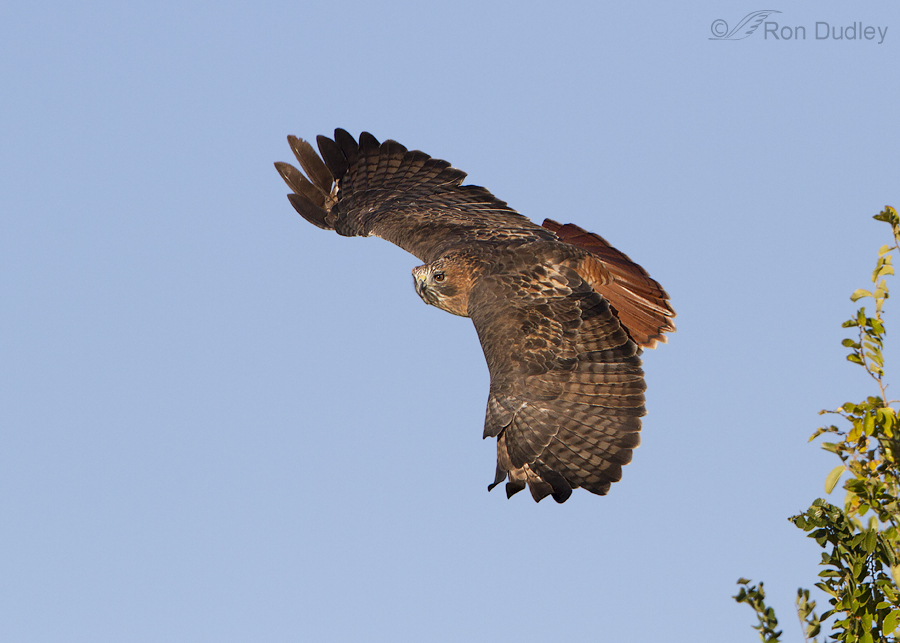
Last month we ventured out into the west desert in an attempt to locate and photograph buteos and Golden Eagles. With the exception of one adult Red-tailed Hawk and a (mostly uncooperative) Golden Eagle who let us get close it was largely a frustrating morning.
The red-tail was perched in a tree that was swaying in the wind and it was quite entertaining to watch it rockin’ and rollin’ as it attempted to remain stable on its unstable perch.
Golden Eagle In Flight
A Guide To Aging Bald Eagles
As we go into prime “eagle watching” season here in northern Utah I thought it might be timely to present a guide that would be helpful in aging Bald Eagles as they progress through the 5-6 year process of becoming adults. Many of these younger birds are mistakenly identified as Golden Eagles by the general public. Eagles that have not reached the adult stage are referred to as immature, juveniles or sub-adults. Plumage stages are highly variable, depending on molt sequence, age and timing so other factors like iris and beak color are also taken into account when estimating age. Eyes gradually change from dark brown to yellow while the beak goes from blackish-gray to yellow. 1/4000, f/8, ISO 500, 500 f/4, not baited, set up or called in The adult Bald Eagle is unmistakable with its distinctive bright white head and tail contrasting with the dark brown body and wings. 1/200, f/6.3, ISO 800, 500 f/4, 1.4 tc, not baited, set up or called in But juveniles present very differently than adults, especially in the early stages of development. This very young bird is barely fledged and was still hanging around its nest in sw Montana. Notice that the plumage is dark brown throughout, though they may have some white or pale mottling at this stage – especially on the underparts. Both eye and beak are very dark. 1/2000, f/6.3, ISO 500, 500 f/4, 1.4 tc, not baited, set up or called in This is a first year bird during winter. 1/800, f/8, ISO 500, 500 f/4, natural light,…
Birds Dealing With Snow And Cold
Birds use a variety of tactics to deal with the harsh conditions presented by an unusually cold and snowy winter. Some are more effective than others. I thought it might be interesting to see a few of them that I’ve been able to photograph in the last several weeks. My usual disclaimer for posts relating to behaviors; many of these images are technically lacking but I think they do illustrate some of the conditions these birds are having to cope with. 1/2500, f/6.3, ISO 640, 500 f/4, 1.4 tc, natural light After a fresh snow, the food source for many small birds is largely hidden and unavailable without some extraordinary measures. This juvenile White-crowned Sparrow, and others in the flock, were flitting from one snow-covered perch to another in an obvious attempt at knocking the snow off so they could get to the seeds underneath. Here you can see the snow falling away and immediately afterward the sparrow fed on the uncovered seeds. 1/2500, f/7.1, ISO 500, 500 f/4, 1.4 tc, natural light, not baited, set up or called in When it gets very cold most water sources freeze up completely which makes fish largely inacessable to Bald Eagles so many of them turn to scavenging as their primary food source. But this species adapted very well to scavenging eons ago which is one of the reasons Ben Franklin looked in disfavor at the proposal to make the Bald Eagle our national bird. 1/1000, f/5.6, ISO 640, 500 f/4, 1.4 tc, natural light, not baited, set up or…
A Recent Potpourri Of Birds From Antelope Island
Antelope Island always has an interesting mix of birds for the photographer and birder. During the winter months raptors are one of the primary attractions for me but soon after the cold months are over they begin to thin out and the migrating spring birds begin to appear. The last several weeks have been in transition with fewer raptors but many migrating species are beginning to show up – in addition to the many year-round residents on the island. With this post I thought I’d present a few shots from the past week or so as a small representation of some of the common birds right now. 1/2500, f/6.3, ISO 500, 500 f/4, 1.4 tc Black-billed Magpies are year-round residents of the island and they’re in a nesting frenzy right now which allows for some interesting opportunities for the photographer. This bird is landing on a bush very near its nest. 1/1250, f/7.1, ISO 500, 500 f/4 Springtime is my favorite season to photograph Chukars because they’re all dolled out in fresh plumage and they’re very approachable when they’re calling from rocks. For much of the rest of the year they spend their time scurrying around in the vegetation and it’s quite difficult to get a clean shot. This one was calling with a lot of enthusiasm! 1/3200, f/5.6, ISO 500, 500 f/4, 1.4 tc Some of the Loggerhead Shrikes also remain on the island year-round but their numbers increase noticeably in spring. 1/1000, f/6.3, ISO 640, 500 f/4, 1.4 tc It’s always a treat when the Long-billed Curlews return to…


